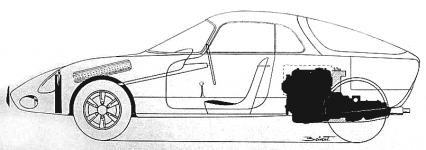1audio said:
More like -160dB to -150dB.
I would be cautious of the 22M carbon comp resistor. That will have a high excess noise and less that stabe value. The need for a biasing resistor for the mike capsule requires such a resistor but I have spent many hours troubleshooting a noisy resistor like that in an HP400H voltmeter. Caddock has some good options for that application.
It's not where you think, they're in the followers on the output. The resistance is shunted below 10Hz and there is no DC on them hence no excess noise. You are welcome to be interested in added noise 20 or 30 dB below the existing noise floor, I just don't find it too productive.
Same for the -150dB vs -160dB, There has to be diminishing returns.
scott wurcer said:
It's not where you think, they're in the followers on the output. The resistance is shunted below 10Hz and there is no DC on them hence no excess noise. You are welcome to be interested in added noise 20 or 30 dB below the existing noise floor, I just don't find it too productive.
Same for the -150dB vs -160dB, There has to be diminishing returns.
If there is no DC the resistors should not matter, but then why are they there? A pencil line could almost do the same thing.
I doubt that anything below -130 dB matters but as a way to find defective parts or significant differences in construction the distortion test is useful.
1audio said:
If there is no DC the resistors should not matter, but then why are they there? A pencil line could almost do the same thing.
A picoamp bias return through 22Meg, 22 micro volts DC, please, you DO understand these issues better, why be so obtuse?
Scott is showing where sloppy engineering can create poorly performing products. Usually, you have to be VERY careful with high value carbon resistors, as they can have both big time 1/f noise and distortion. Not always, but often. It just is not good engineering to put in potentially problematic parts. Maybe, if you are making toys, it is OK. Hi Fi, no!
john curl said:Usually, you have to be VERY careful with high value carbon resistors, as they can have both big time 1/f noise and distortion.
Excess 1/f noise and distortion at 20uV acrosss?
 Yes, that must be huge, but then we have quantum noise reduction Bybee devices at rescue.
Yes, that must be huge, but then we have quantum noise reduction Bybee devices at rescue.syn08 said:
Excess 1/f noise and distortion at 20uV acrosss?Yes, that must be huge, but then we have quantum noise reduction Bybee devices at rescue.
Do you like sounds modulated by noises?
scott wurcer said:
A picoamp bias return through 22Meg, 22 micro volts DC, please, you DO understand these issues better, why be so obtuse?
Actually I don't have much of a clue what you are doing. The picoamps of bias current does help me better understand where they might be used. I read no voltage literally. Again the next question I would have is how much the temp variations will change the bias current in question. And whether it will matter.
For the uninitiated looking in, FET bias or leakage increases a lot with temperature. It can be a surprise if its not planned for. I have also seen Mica caps and Ceramic caps get very noisy in high impedance circuits when they have a bias across them. But they measure perfectly when cold out of circuit. And a hydroscopic surface contamination on a circuit board can drive you nuts. Really high impedance stuff requires a lot of care.
john curl said:They appear to be 'clueless', Demian. Engineers, BAH!
Yeah, and those Analog fellows seem to be the worst. I'll bet Scott even uses a moving magnet cartridge!
Demian, the other unexpected thing (it was for me, anyway, the first time I ran into it) is drain voltage. I had built a preamp with a FET input which had higher distortion and noise than I expected. Dropped the drain voltage by a factor of 2 and suddenly everything was OK. This caused much head-scratching, since the curves looked so nice and flat. Dumb old tube guy that I am, I had never heard of impact ionization...
SY said:[snip] Dumb old tube guy that I am, I had never heard of impact ionization...
Really?? Where have you been hiding???
Jan Didden
john curl said:Engineers, BAH!
Here's a sample of real Engineers! Bybees for the people!

http://www.diyaudio.com/forums/showthread.php?s=&threadid=141618
For the record, Jack Bybee called me last night. He is off to Macau with his charming wife. Gambling is her thing, you know. He left the Bentley at home, but sooner or later, he promises to give me a ride in it. His new Mercedes is pretty nice, but boring at this point.
syn08 said:
Here's a sample of real Engineers! Bybees for the people!
http://www.diyaudio.com/forums/showthread.php?s=&threadid=141618
Piezo horns would filter better: they have about 200 nF.
- Status
- Not open for further replies.
- Home
- Amplifiers
- Solid State
- John Curl's Blowtorch preamplifier

